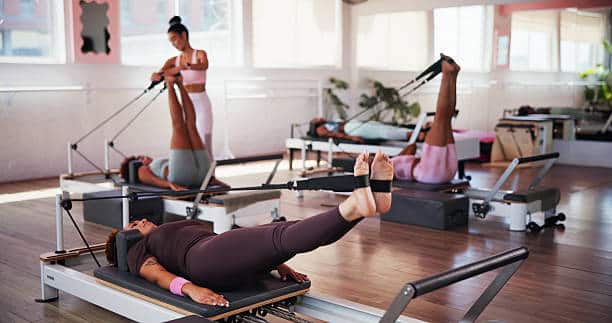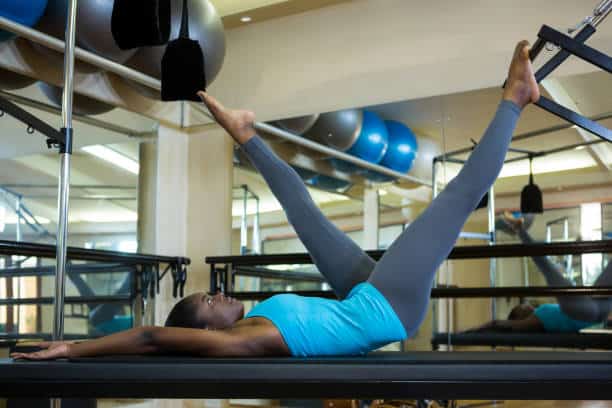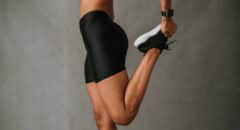
Trying Pilates for the first time can be both exciting and intimidating. It promises strength, flexibility, mind-body connection — but when you walk into a studio and don’t see bodies like yours, or you feel anxious about trying classical moves, it can feel like the practice isn’t for you.
Luckily, more studios and teachers are working to change that. This article will guide you (especially if you’re new) on how to start Pilates in a way that centers belonging, safety, and respect — so you feel welcomed, seen, and empowered.
Choosing Beginner-Friendly Studios & Instructors
The foundation of a positive Pilates journey is finding someone and somewhere that supports your starting point.
What to look for:
- Introductory or “Foundations” classes
Studios that offer beginner-friendly or foundations classes are a good sign. These classes use simpler moves, slower pacing, more demo and corrections. - Size of class & instructor attention
Smaller group sizes allow the instructor to see and correct alignment, offer modifications, and check in individually. If classes are packed, it’s harder to get adjustments. - Studio vibe & feel
Is the space clean? Is there enough room between reformers or mats so you don’t feel crowded? Is the lighting, music, and décor welcoming, calming, not overly flashy or intimidating? Visiting a class (or watching a drop-in) can help you feel the energy before committing. Also pay attention to how front desk and instructors respond to your questions. - Instructor background & inclusivity
Find instructors who have experience with beginners, different body types, mobility limitations, or cultural sensitivity. - Pricing & trial classes
Good studios allow trial classes or intro pricing, which lets you try without a big commitment. Contracts or high upfront costs can add pressure when you’re still exploring. Check if the studio offers drop-ins, specials for beginners, or packages that are flexible.
RELATED: How Black-Owned Studios Are Reclaiming and Redefining Pilates
Knowing Your Rights: Space, Voice, Respect
When starting, knowing what you deserve in a class helps you advocate for yourself and avoid feeling out of place.
Key principles:
- You have the right to be heard
If something hurts, doesn’t feel right, or you don’t understand the cue, you can ask for clarification, a modification, or even rest. A respectful instructor should welcome those questions. - Your comfort matters
You should feel safe in how a class is conducted — physically and emotionally. If the instructor says you need to “tough it out” or “fix your body,” that’s a red flag. Good classes adapt situations to you, not you adapting painfully to a one-size-fits-all standard. - Respect for boundaries
Whether physical (if you don’t like hands-on adjustments) or in terms of props, pacing, etc., classes should be inclusive of your personal boundary. You don’t have to do a move just because everyone else is. - Representation & visible inclusivity
When marketing, the website, or the studio shows diverse bodies, people who look like you, different skin tones, ages, sizes — that matters. It signals that you belong there.

Modifying Moves to Fit Your Body
Pilates is precise, but “precision” doesn’t mean “one shape fits all.” Modifications are essential for beginners and people with different body types, mobility, or experience.
Examples & tips:
- Start with modified versions of classic moves
Moves like The Hundred, Plank, Bridge, Spine Stretch can be adjusted. For example, bending the legs in The Hundred or using support props (blocks, pillows) for bridge or plank. Well+Good has a guide for favorite modifications of popular moves. - Use props
Blocks, chairs, straps, bands, cushions can help reduce strain and allow you to do the move with better alignment. - Progress gradually
Begin with easier versions (mat work before reformer, shorter holds, simpler ranges of motion); as strength and mobility build, gradually move toward more challenge. - Pay attention to alignment and form over speed or depth
It’s okay to move slowly, do fewer reps, or reduce range. Doing fewer well is better than more poorly.
RELATED: Pilates for Black Girls: A 30-Day Routine to Strengthen and Tone Your Body
Building Confidence in Community Settings
Pilates is not just physical; it’s mental and emotional too. Feeling out of place often comes from fears about judgment or comparison. Here’s how to build confidence as you enter group classes or community settings.
Strategies:
- Go with a friend or buddy
Having a familiar face beside you can help reduce anxiety. - Pick times that feel less crowded
Off-peak hours, weekday mornings, or smaller classes are usually quieter and less pressure-filled. - Wear what makes you feel good
Comfortable clothes you can move in, that cover what you want to. The more at ease you are in your clothes, the more you can focus on the movement. - Start with private or semi-private sessions
If possible, do one-on-one sessions early on so the instructor can help you with form and modifications, set expectations, and help you feel grounded. - Celebrate small wins
Maybe you lasted longer in a hold, or felt less shaky, or understood a cue. Each thing you do builds confidence. - Don’t compare your journey to others
Everyone’s body, mobility, background is different. What someone else does well doesn’t undervalue your progress.

Putting It All Together: Starting Your Pilates Journey
Here’s a step-by-step plan to begin Pilates with confidence and belonging:
- Reflect on your goals and concerns.
What do you want from Pilates? Strength? Flexibility? Healing from injury? How do you want movement to feel (safe, playful, restorative)? What makes you nervous? - Research studios or online options.
Check websites, reviews, class descriptions for inclusivity signals (diverse bodies, modifications, beginner classes). - Reach out before committing.
Message or call asking: “Do you have modifications for beginners / people with limited mobility?” “What is your cancellation policy / sliding scale / trial class?” How the studio responds can tell you a lot. - Try a private or foundations class first.
Or start online, with beginner-friendly modified workouts. Use a mirror or video feedback to watch your alignment. - Observe how your body feels.
After class: what hurt? What felt good? What alignment or form suggestions did the instructor give? Use that to guide what to do next. - Be consistent, gentle, patient.
Pilates is cumulative. Even once a week can improve strength, posture, breathing. Rocks don’t form overnight — allow your body to adapt. - Celebrate progress & adjust.
As you get more comfortable, challenge yourself a bit. But keep asking: “Is this movement honoring my body today?” If not, modify, rest, or switch.
Starting Pilates without feeling out of place is totally possible. The key is finding spaces (in-studio or online) that welcome you, instructors who listen and adapt, movements that meet you where you are, and a mindset of safety and patience. When Pilates becomes more inclusive, it stops being a “luxury fitness trend” and becomes a tool for empowerment, healing, and long-term wellness — for everyone.









